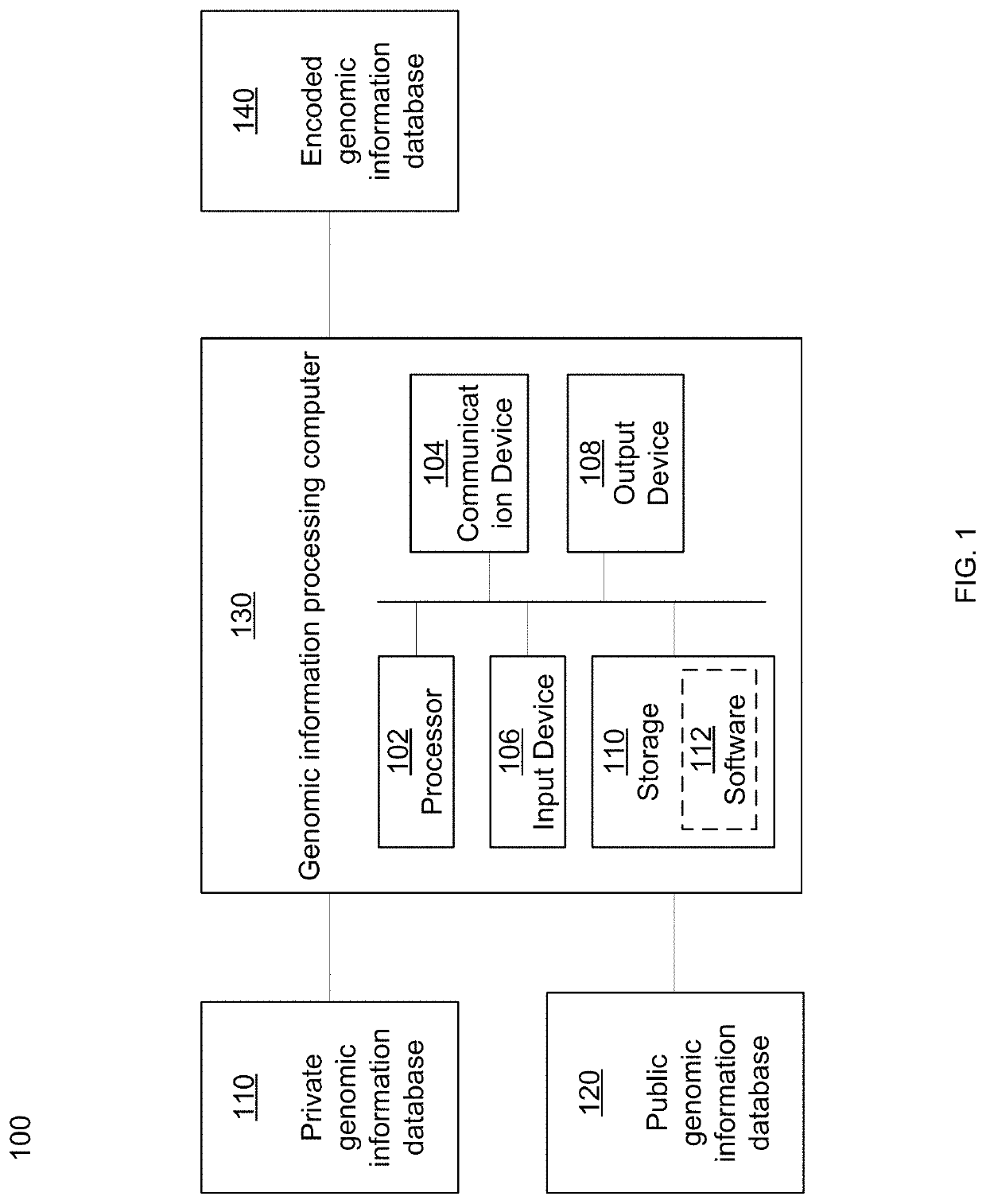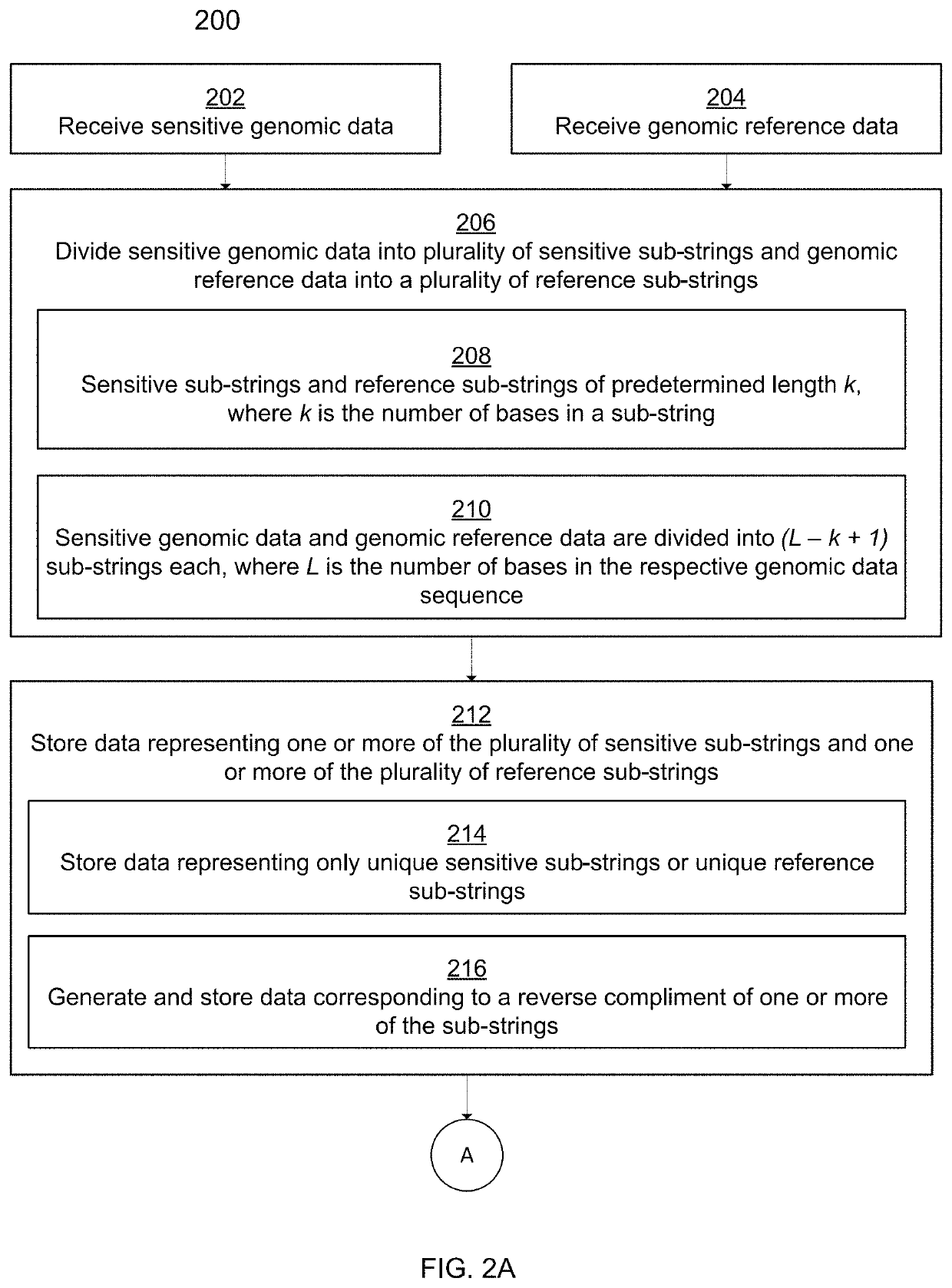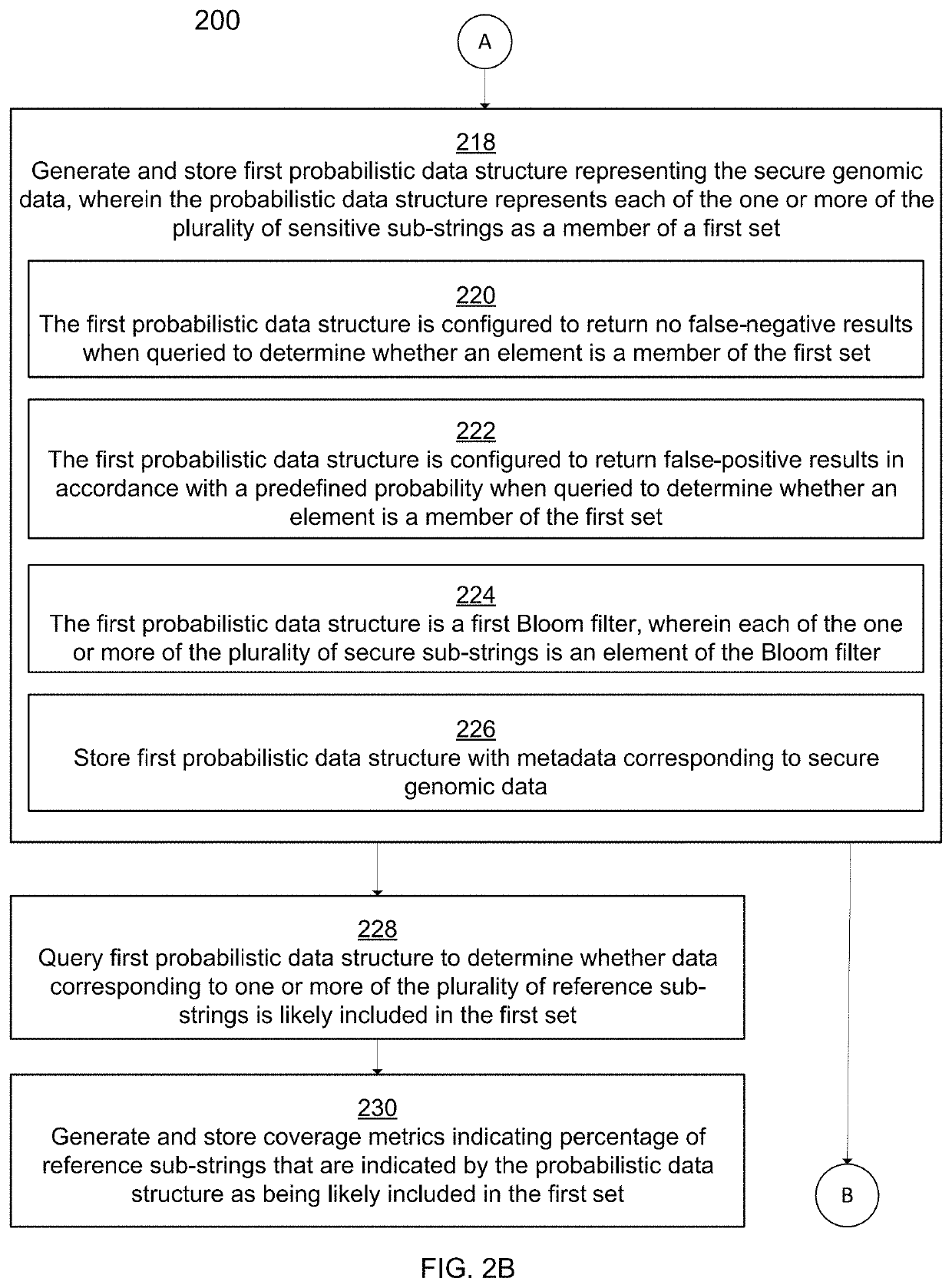Secure communication of sensitive genomic information using probabilistic data structures
a probabilistic data structure and secure communication technology, applied in the field of probabilistic data structure to anonymize data, can solve the problems of avoiding the vast amount of genomic information that private organizations are unwilling to disclose in genomic data analytics, and achieve the effect of safe disclosur
- Summary
- Abstract
- Description
- Claims
- Application Information
AI Technical Summary
Benefits of technology
Problems solved by technology
Method used
Image
Examples
Embodiment Construction
[0037]The following description sets forth exemplary methods, parameters, and the like. It should be recognized, however, that such description is not intended as a limitation on the scope of the present disclosure but is instead provided as a description of exemplary embodiments.
[0038]Traditional techniques for bioinformatics and genomic data analytics require the disclosure of private genomic information in order for meaningful comparisons of that private information to be made against other private genomic information or against publicly available reference genomic information. For example, in order for a database of genomic information such as food pathogens to be built and expanded, private organizations would be required to disclose genomic information associated with their organizations. Due to the sensitive nature of certain private genomic information, many organizations have been reluctant or unwilling to disclose said private genomic information. Thus, bioinformatics syst...
PUM
 Login to View More
Login to View More Abstract
Description
Claims
Application Information
 Login to View More
Login to View More - R&D
- Intellectual Property
- Life Sciences
- Materials
- Tech Scout
- Unparalleled Data Quality
- Higher Quality Content
- 60% Fewer Hallucinations
Browse by: Latest US Patents, China's latest patents, Technical Efficacy Thesaurus, Application Domain, Technology Topic, Popular Technical Reports.
© 2025 PatSnap. All rights reserved.Legal|Privacy policy|Modern Slavery Act Transparency Statement|Sitemap|About US| Contact US: help@patsnap.com



